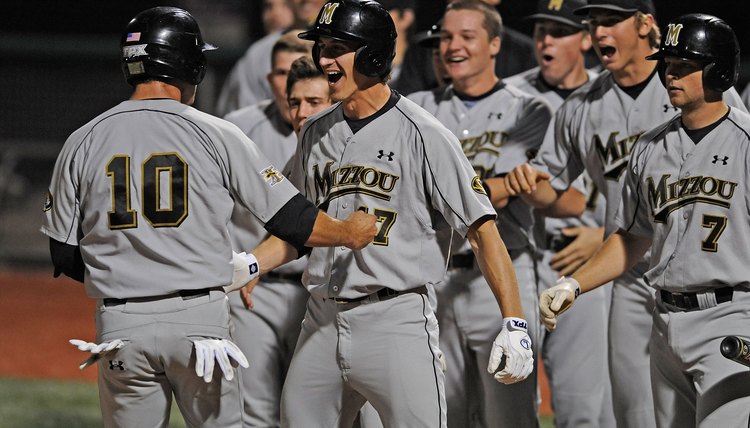NCAA Redshirt Rules for Baseball

NCAA Division I baseball players have five years to complete their four seasons of eligibility. Players at Division II and Division III schools have 10 semesters or 15 quarters to complete their four years. That clock starts when they first enroll at a two- or four-year school. At some point a player may take a season off for competitive reasons such as roster crowding/skill development/or injury. This is called a "redshirt" year. It allows him to sit out and remain in the program without wasting one of his four seasons.
What are the general redshirt rules?
Players must abstain completely from competition to preserve a season of eligibility during a redshirt year. Players who appear in even one inning of one baseball game will lose a season of eligibility, unless they later gain a hardship waiver for injury, illness, family crisis, natural disaster or other calamity. Players in redshirt years are bound by all NCAA rules, including those regulations designed to ensure academic progress toward graduation. Players can still practice and participate in team activites but cannot appear in game.
Do redshirt players count against the roster?
Division I baseball teams are allowed to give at least some athletic scholarship money to up to 27 players, who are called "counters" in college athletics. These teams are allowed to have 35 players on the roster. Redshirt players receiving any level of athletic scholarship count against both numbers. This makes redshirt spots limited and hard to come by.
What is a hardship waiver?
Players who suffer a season-ending injury or illness during the first half of the spring season may be eligible for a hardship waiver if they haven't played in more than 30 percent of their team's games. Playing time missed during fall baseball does not factor into the hardship calculations. Each player must apply to the NCAA for a hardship waiver and document his case. If the NCAA grants the waiver, that player will receive a do-over for that season -- effectively creating a "medical redshirt" year.
What is a sixth-year waiver?
In rare instances the NCAA will grant a sixth-year waiver to extend an individual eligibility calendar past five years. That player must show that he lost two seasons due to circumstances out of his control. That effectively gives the player a second redshirt year. For example, many redshirt players were granted an extra year due to the COVID-19 pandemic that cancelled most of the 2020 baseball season.
What is an academic redshirt?
Starting in 2016, NCAA Division I athletics allow a new type of redshirt year thanks to more stringent academic requirements. An athlete who fails to meet these new standards can still enroll in school if he meets the previous academic standards. However, he won't be able to compete in sports during his first year of school. This new "academic redshirt" designation will be the equivalent of the old "partial qualifier" rule. That rule allowed an athlete to enroll in college, sit out his first season and spend his first academic year becoming eligible for competition.
Writer Bio
Jeff Gordon has been reporting and writing since 1977. His most recent work has appeared on websites such as eHow, GolfLink, Ask Men, Open Sports, Fox Sports and MSN. He has previously written for publications such as "The Sporting News" and "The Hockey News." He graduated from the University of Missouri-Columbia School of Journalism in 1979 with a bachelor's degree.
